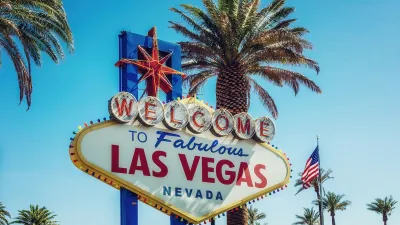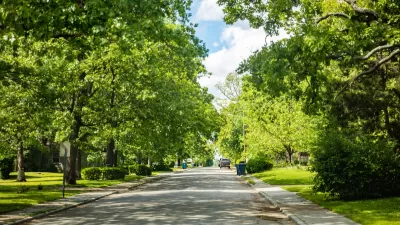Emily Badger reports on pioneering research that is looking into ways to utilize the heat trapping properties of asphalt, rather than fighting it.
The heat attracting properties of asphalt are common knowledge to anyone who's attempted to dash from the beach to their car on a hot summer day with their flip-flops in hand, and not on their feet. And, of course, the heat trapping effects of urban agglomerations of asphalt covered surfaces, known as the urban heat island effect, are well know to many planners.
As Badger notes, while a lot of work has gone into figuring out how to combat the effect, Rajib Mallick, a professor of civil and environmental engineering at the Worcester Polytechnic Institute in Massachusetts, and other researchers are working on ways to harness the heat contained in asphalt and put it to productive uses.
"Asphalt, for instance, could heat water coursing through a series of pipes embedded in the road. And that process would both cool street surfaces and send their heat somewhere useful...This heat could also be converted into different forms of energy. Other liquids that turn into vapor could be used to drive turbines generating electricity."
"Mallick and his colleagues have not only done the theoretical work to envision these possibilities, they've begun testing them as well with support from both the state of Massachusetts and the National Science Foundation," writes Badger.
What about just paving with something less heat intensive than asphalt?
"Economics drives everything," Mallick says. "And if you think about it, asphalt is very cheap. You can't find a cheaper material to build pavement. Asphalt is a byproduct of petroleum, so as long as there will be petroleum, there will be asphalt."
FULL STORY: Instead of Lamenting the Urban Heat Island Effect, Why Don’t We Harness It?

Study: Maui’s Plan to Convert Vacation Rentals to Long-Term Housing Could Cause Nearly $1 Billion Economic Loss
The plan would reduce visitor accommodation by 25,% resulting in 1,900 jobs lost.

North Texas Transit Leaders Tout Benefits of TOD for Growing Region
At a summit focused on transit-oriented development, policymakers discussed how North Texas’ expanded light rail system can serve as a tool for economic growth.

Why Should We Subsidize Public Transportation?
Many public transit agencies face financial stress due to rising costs, declining fare revenue, and declining subsidies. Transit advocates must provide a strong business case for increasing public transit funding.

How to Make US Trains Faster
Changes to boarding platforms and a switch to electric trains could improve U.S. passenger rail service without the added cost of high-speed rail.

Columbia’s Revitalized ‘Loop’ Is a Hub for Local Entrepreneurs
A focus on small businesses is helping a commercial corridor in Columbia, Missouri thrive.

Invasive Insect Threatens Minnesota’s Ash Forests
The Emerald Ash Borer is a rapidly spreading invasive pest threatening Minnesota’s ash trees, and homeowners are encouraged to plant diverse replacement species, avoid moving ash firewood, and monitor for signs of infestation.
Urban Design for Planners 1: Software Tools
This six-course series explores essential urban design concepts using open source software and equips planners with the tools they need to participate fully in the urban design process.
Planning for Universal Design
Learn the tools for implementing Universal Design in planning regulations.
Ascent Environmental
Borough of Carlisle
Institute for Housing and Urban Development Studies (IHS)
City of Grandview
Harvard GSD Executive Education
Toledo-Lucas County Plan Commissions
Salt Lake City
NYU Wagner Graduate School of Public Service




























